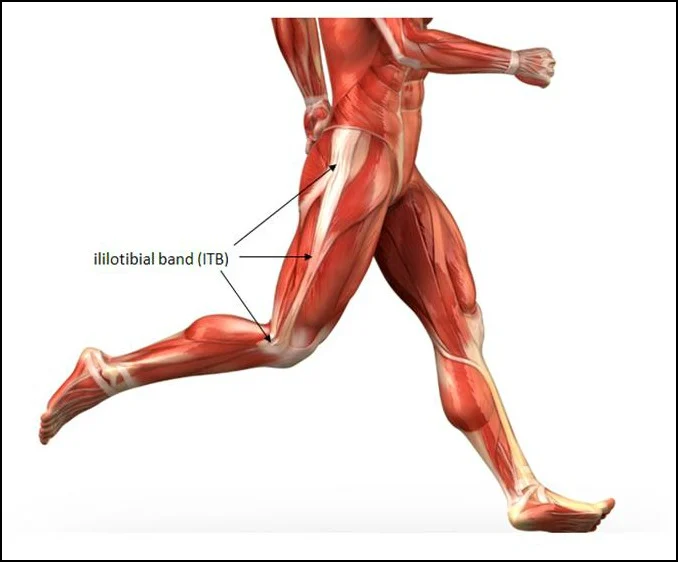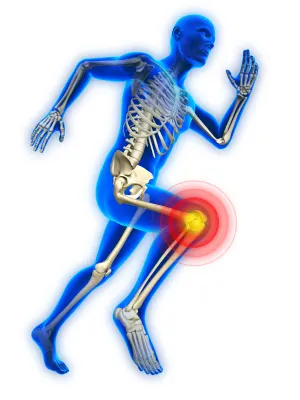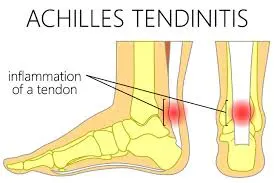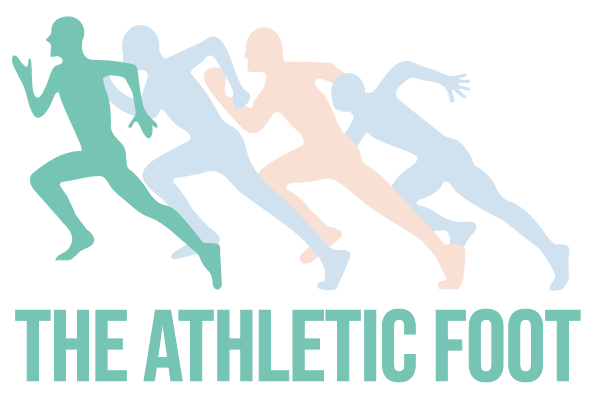Runners are notorious for common overuse injuries such as knee pain, shin splints and plantar fasciitis. With the demands of repeated use, it is hard (and flirting with impossible) to stay injury-free throughout a lifetime of running.
Most runners, new and lifetime alike, deal with common aches and pains at best and sidelining injuries at worst, all experienced as a result of pounding the pavement. Aches, pains, and injuries related to running are common.
While consensus in the rate of injury among runners is difficult to pinpoint, estimates vary significantly ranging from 30 to more than 80 percent of runners in a given year.
When you factor in the variables to assessing the amount of running injuries it is not surprising to find such a wide range. Depending on the individual, everything from a dull pain during one run to a stress fracture or chronic pain can qualify as an injury.
The common thread among them all is the likelihood that the injury is in the lower extremity. This is also unsurprising due to the nature of running and the excessive stress placed on the lower half of the body.
Research abounds when it comes to diagnosing, treating and preventing running injuries. Runners want to remain injury free, and often they’ll do whatever it takes to stay afoot. Unfortunately, many runners translate that to mean “keep running, regardless of the pain.”
Runners tend to err on the stubborn side, and they will wait for that small ache or pain to become a major problem rather than addressing it at its inception.
As soon as you feel discomfort or pain, you should take the necessary steps to address the issue. You don’t need to head to the physical therapist for every inkling of injury. You should, however, determine if it is a recurring issue.
If your foot hurts every time you get back from a run, look into it. There might be some simple stretches or strength exercises you can do to avoid a painful aftermath. If your big toe hurts one day and you remember stubbing it the day before, it’s probably not a long-term issue.
If you are struggling with regular pain, do some research and visit a physical therapist if you’re able. Regular pain when running is not normal.
Even if you can run through it, you should address it before it turns into a bigger problem. Prevention of injury is the goal, not treating one that has already progressed. Prevention is preferred to treatment.
Contents
Five Common Running Injuries
Shin Splints
Shin splints are a generalized term for pain surrounding the tibia, or the front part of the lower leg. The pain can be dull or throbbing, mild or intense. Shin splints are often a result of overuse.
Symptoms come on gradually when you have asked too much, too soon from your body. They are common when you have intensified or changed your training routine. Often, they are accentuated by things like poor footwear, overpronation, or a combination of the two.
According to The Virtual Sports Injury Clinic, “The muscles of the lower leg pull on the periosteum or sheath surrounding the shin bone causing pain and inflammation.”
This means they can be treated by rest, ice, compression, and elevation, or RICE. If you are interested in compression products to help treat shin pain, there are a slew of them available online – most cost roughly $10 to $20.
Wearing compression products alone won’t bring things completely back to order, but they can help the process along when done in conjunction with the other components of rest, ice, and elevation.
Shin splints can be a recurring issue, which means proper attention and care must be taken to avoid seeing their return. Stretching and strengthening are an important part of any exercise regime.
There are specific areas you can focus your attention when dealing with shin splints, and doing so will help you heal with the goal to also prevent future recurrences.
Calf muscles are often a component in shin splints as well, which means added calf stretching and strengthening to your routine can be helpful. Recommended stretching and strengthening for shin splint sufferers:
- Toe raises
- Calf stretch and calf raises
- Seated shin stretch
- Draw the alphabet with your toes
- Alternate walking on your heels and your toes
Iliotibial Band (IT Band) Syndrome
The IT Band is an important stabilizing structure that runs along the outside of the leg.
It extends from the pelvis to the tibia and the connective tissue outside the knee joint can become a source of pain as a result of overuse in running or other physical activity with a repeated extension of the knee (cycling and frequent squatting are also common offenders.)
The pain around the connective tissue is a result of inflammation and irritation, which can also be addressed by following the RICE principles as the first line of treatment. Foam rolling and massage can also bring some relief to the pain site.

The IT band can be difficult to stretch, but there are plenty of photos and videos that can guide you on how to do so. You will likely have to take a break from running to find complete healing in the IT band. It is another injury that can become chronic if not well taken care of.
Plantar Fasciitis
Plantar Fasciitis is a painful injury that can once again be credited to overuse. The pain will be primarily in the heel, and it will be at its worst in the morning when first getting out of bed.
The plantar fascia runs along the bottom of your foot connecting heel to toes, and when inflamed it can cause significant pain.
Runners have a high risk of developing plantar fasciitis. The plantar fascia is the shock absorber in the foot. When put under repeated stress, it can be over-taxed and small tears can occur in the tissue.
- i. When tears occur, or when it is simply irritated or inflamed, you will likely notice the pain after exercise versus during.
- ii This can make it tempting to continue running because it may abate completely on your daily run, but you will pay generously the next morning.
The plantar fascia aides in supporting the arch of the foot. An effective way to combat plantar fasciitis may be investing in a shoe with good arch support.
Start by trying on various stability and/or motion control support options offered by popular brands and see what works best for you.
You can find excellent contenders delivered by Asics, Brooks, Nike, and Mizuno.
Runner’s Knee (Patellofemoral Pain Syndrome)
You can make a clear assumption regarding the tendency of this injury to be found among runners given the injury’s descriptive nickname. Patellofemoral Pain Syndrome is used to describe pain surrounding the knee.
As the largest joint in the body, the knee is a complex structure. Several components of the knee are designed to make movement easier, but intense activity that stresses the knee can lead to pain.
In many cases, overuse causes the pain. In some cases, it can be due to Patellar Malalignment.iii As a runner experiencing knee pain, you are more likely to fall into the former category.

When you experience pain, cut back on your miles and avoid over-taxing the knee in other ways (such as a lot of squatting, bending over and lifting, etc.)
Running on softer surfaces can also help, so spending some time on a track or even running on the grass versus the sidewalk can be helpful.
Strengthening your quads, and stretching your calf and hamstring will help support the surround areas.iv
Achilles Tendonitis
The Achilles is the largest tendon in the body. When it is inflamed due to too much stress, it becomes Achilles tendonitis – a painful dull or sharp pain that usually occurs near the heel.
As runners, that stress comes from repeatedly using the Achilles when running. It can endure a significant amount of stress, but when asking too much, too soon, tendonitis can develop.

Weak calf muscles can place undue stress on the Achilles. You can help prevent Achilles tendonitis by regularly stretching your calf and doing calf raises.
You can use a stair for added stretch, or start level with the ground and step back into a moderate lunge.
If you are experiencing pain you believe to be your Achilles tendon, R.I.C.E. principles can apply here as well.
You can visit a physical therapist for a thorough evaluation, particularly if your attempts at recovery are not yielding results.
Keys to Prevention of Injury in Running
There are certain protective measures that all runners can benefit from to avoid injuries, even the most common.
They are often preventable because they are often a combination of overuse, insufficient footwear, or improper form.
1. Progress slowly
If you have yet to notice, “too much, too soon” is the theme of most injuries. It is common for runners to start out too zealous and take on more than their bodies are ready to handle.
Changing your routine to increase mileage too quickly, especially if you jump into training, will put your body at risk.
A solid base of miles and time spent on your feet will go a long way before starting a training plan.
When you are building a base, the rule of thumb is to increase your weekly mileage by no more than 10% each week.
Example: If you ran a 20-mile week, you can safely increase to 22 the following.
Even with that general principle, there are exceptions, and it is extremely important to listen to your body for signals of overload.
If you starting to feel run down or have consistently increasing aches and pains, your body is trying to tell you to slow down.
It is also important to note that this applies to new and seasoned runners. You cannot expect to take months off and pick up where you left off.
No matter how much you pride yourself on staying in shape, you will have to be honest about where you are at and increase slowly.
Having a history of strong running will prove helpful, and it gives you a much better place to start, but you still need to be in tune with your body and realistic about what you ask of it.
“It’s a marathon, not a sprint,” conveniently applies when increasing mileage.
2. Wear proper footwear for your feet, stride, and strike
There are more than a sufficient number of running shoes to choose from. You have multiple brands, styles, and resources at your fingertips and it will serve you well to put them to good use. Analyzing your stride, your foot strike, and your pronation will allow you to pinpoint what you need in a shoe.
Whether you prefer the lightweight minimalist shoe or you need a sturdy support shoe to protect against overpronation, the right shoe can make all the difference.
There are specialty running stores all over the country, and many of them have trained professionals to help you find the right pair.
Do some research, try on a lot of shoes, and find what will best support your sport.
3. Cross Train.
Spending time on the roads (or treadmill) is important, but that’s not what most runners need to be reminded of.
Changing up your cardio routine to work in swimming, elliptical training, cycling or walking, can give your body a chance to exercise different muscles and give you a great low-impact workout.
Running is a high-impact sport, and switching it up to give your joints and muscles a little T.L.C. can keep you feeling good.
It also allows you to maintain daily activity while you are building up to running as frequently as you may like.
You can’t start off running seven days a week, especially if you’re keeping to rule number one.
You can, however, spend a day swimming, a day biking, a day walking, and three to four days running; and allow your body the time it needs to adjust. Your running will reap the rewards!
- Spartan Race vs Tough Mudder Compared – Which Obstacle Race is Better? - January 22, 2022
- Brooks Addiction Walker vs New Balance 928: Which is Best? - December 7, 2021
- Brooks Ravenna vs Adrenaline – Which is Best for You? - December 4, 2021
